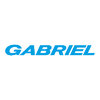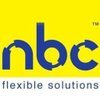Filter interviews by
Suprajit Engineering Supervisor Interview Questions and Answers for Freshers
Suprajit Engineering Supervisor Interview Experiences for Freshers
1 interview found
Interview Questionnaire
1 Question
- Q1. About my techical skill & experience & knowledge
Top trending discussions






Interview questions from similar companies

I applied via Campus Placement and was interviewed before Feb 2020. There were 3 interview rounds.
Interview Questionnaire
1 Question
- Q1. Tell me about yourself .
Interview Preparation Tips
2.Listen the question carefully late the interveiwer lead the conversation .

I applied via Company Website and was interviewed before Apr 2021. There were 2 interview rounds.
(4 Questions)
- Q1. Tell me about yourself.
- Q2. What are your salary expectations?
- Q3. Share details of your previous job.
- Q4. Why are you looking for a change?
(1 Question)
- Q1. Departmental discussion
Interview Preparation Tips

I applied via Walk-in and was interviewed before Jan 2023. There was 1 interview round.
(1 Question)
- Q1. Cnc machine parameters and Programming question

I applied via Recruitment Consulltant and was interviewed in Sep 2023. There was 1 interview round.
(1 Question)
- Q1. Normal question like what you have done in last company
Interview Preparation Tips

I applied via Campus Placement and was interviewed in Oct 2023. There were 3 interview rounds.

Basic reasoning questions
(3 Questions)
- Q1. About mechanical like production inventory supply chain.
- Q2. Focus on project questions.
- Q3. Family background and introduction
Interview Preparation Tips
- Production
- SCM
- Project Management

I applied via Naukri.com and was interviewed before Apr 2023. There was 1 interview round.
(5 Questions)
- Q1. Tell about your DWM.
- Q2. How you handle pressure situation where you were short on manpower and other necessary equipment and still had to gave best of your performance.
- Q3. How you handle different kind of personality
- Q4. Tell about project where you do some production improvement.
- Q5. What is line balancing
- Ans.
Line balancing is the process of assigning tasks to workstations in a way that evens out the workload and maximizes efficiency.
Involves distributing work evenly among workstations
Helps in reducing idle time and bottlenecks
Improves productivity and efficiency
Example: In a manufacturing plant, line balancing ensures that each workstation has a similar amount of work to do
Interview Preparation Tips

I appeared for an interview before Feb 2024.
(2 Questions)
- Q1. Type of welding
- Ans.
There are various types of welding processes used in engineering, such as MIG, TIG, stick, and flux-cored welding.
MIG (Metal Inert Gas) welding uses a wire electrode and shielding gas to join metals together.
TIG (Tungsten Inert Gas) welding uses a non-consumable tungsten electrode and shielding gas for precise and clean welds.
Stick welding, also known as Shielded Metal Arc Welding (SMAW), uses a flux-coated electrode t...
- Q2. Sheet metal manufacturing process
- Ans.
Sheet metal manufacturing process involves cutting, bending, and assembling metal sheets to create various products.
Cutting: Using tools like shears, lasers, or plasma cutters to cut the metal sheets into desired shapes.
Bending: Utilizing press brakes to bend the metal sheets into specific angles and shapes.
Assembling: Joining the cut and bent metal pieces together through welding, riveting, or fastening methods.
Finish...
(1 Question)
- Q1. What is ecn &ecr and how it implement
- Ans.
ECN stands for Engineering Change Notice and ECR stands for Engineering Change Request. They are used to document and implement changes in engineering designs.
ECN (Engineering Change Notice) is a document used to communicate changes in engineering designs to relevant stakeholders.
ECR (Engineering Change Request) is a formal proposal to make changes to an engineering design.
ECRs are typically submitted by engineers or p...
(1 Question)
- Q1. Salary Expectation

I applied via Approached by Company and was interviewed in Feb 2024. There were 4 interview rounds.
(1 Question)
- Q1. Simple technical questions
(1 Question)
- Q1. Advanced technical questions
(1 Question)
- Q1. Non technical questions
(1 Question)
- Q1. Personal questions
Interview Preparation Tips

I applied via Referral and was interviewed in Dec 2022. There were 3 interview rounds.

(6 Questions)
- Q1. How many type of defect and define those defects in detail?
- Ans.
There are three main types of defects in engineering: design defects, manufacturing defects, and usage defects.
Design defects occur when there is an issue with the initial design of a product, leading to problems in its functionality or safety. For example, a car with a faulty braking system due to a design flaw.
Manufacturing defects happen during the production process, resulting in a product that does not meet the in...
- Q2. Define 7 wastes
- Ans.
The 7 wastes refer to inefficiencies in a process that can be eliminated to improve productivity and quality.
Transportation: Unnecessary movement of materials or products
Inventory: Excess inventory leading to waste of resources
Motion: Unnecessary movement of people
Waiting: Idle time in a process
Overproduction: Producing more than needed
Overprocessing: Doing more work than necessary
Defects: Errors that require rework or
- Q3. What is line balance and how we can say line is balance?
- Ans.
Line balance refers to distributing workload evenly among different stations in a production line to optimize efficiency.
Line balance ensures that each station in the production line has a similar amount of work to do.
It helps in preventing bottlenecks and maximizing throughput.
Line balance can be achieved by adjusting the cycle times at each station or by adding/subtracting workstations.
An example of line balance is i...
- Q4. How you start you day in office??
- Q5. How we can reduce defects and increase productivity?
- Ans.
To reduce defects and increase productivity, focus on continuous improvement, training, quality control, and efficient processes.
Implement a quality control system to catch defects early on
Provide regular training to employees to improve skills and knowledge
Analyze data to identify root causes of defects and implement corrective actions
Streamline processes to eliminate waste and improve efficiency
- Q6. What is an OEE and define which factors affect this ?
- Ans.
OEE stands for Overall Equipment Effectiveness, a measure of how well a manufacturing process is utilized.
OEE is calculated by multiplying Availability, Performance, and Quality.
Factors affecting OEE include equipment downtime, speed loss, and defects in production.
Improving OEE involves reducing downtime, increasing production speed, and minimizing defects.
For example, implementing preventive maintenance can reduce eq
(4 Questions)
- Q1. Where are you from ?
- Q2. How many members in your family?
- Q3. What is occupation of your father and mother?
- Q4. Are you ready for relocate?
Interview Preparation Tips
Suprajit Engineering Interview FAQs
Tell us how to improve this page.
Suprajit Engineering Interviews By Designations
- Suprajit Engineering Assistant Engineer Interview Questions
- Suprajit Engineering Engineer Interview Questions
- Suprajit Engineering Production Engineer Interview Questions
- Suprajit Engineering Senior Engineer Interview Questions
- Suprajit Engineering Quality Engineer Interview Questions
- Suprajit Engineering Process Engineer Interview Questions
- Suprajit Engineering Junior Engineer Electrical Interview Questions
- Suprajit Engineering Junior Engineer Interview Questions
- Show more
Interview Questions for Popular Designations
- Production Supervisor Interview Questions
- Electrical Supervisor Interview Questions
- Site Supervisor Interview Questions
- Safety Supervisor Interview Questions
- Senior Supervisor Interview Questions
- Security Supervisor Interview Questions
- Maintenance Supervisor Interview Questions
- Mechanical Supervisor Interview Questions
- Show more
Supervisor Interview Questions from Similar Companies
Suprajit Engineering Supervisor Reviews and Ratings
based on 5 reviews
Rating in categories
|
Assistant Engineer
166
salaries
| ₹1.5 L/yr - ₹6 L/yr |
|
Junior Engineer
88
salaries
| ₹1.6 L/yr - ₹4.5 L/yr |
|
Engineer
77
salaries
| ₹2.5 L/yr - ₹6 L/yr |
|
Production Engineer
71
salaries
| ₹2 L/yr - ₹5.5 L/yr |
|
Assistant Manager
58
salaries
| ₹5 L/yr - ₹8.6 L/yr |

JBM Group

Subros

Endurance Technologies

Spark Minda
- Home >
- Interviews >
- Suprajit Engineering Interview Questions >
- Suprajit Engineering Supervisor Interview Questions for Fresher












